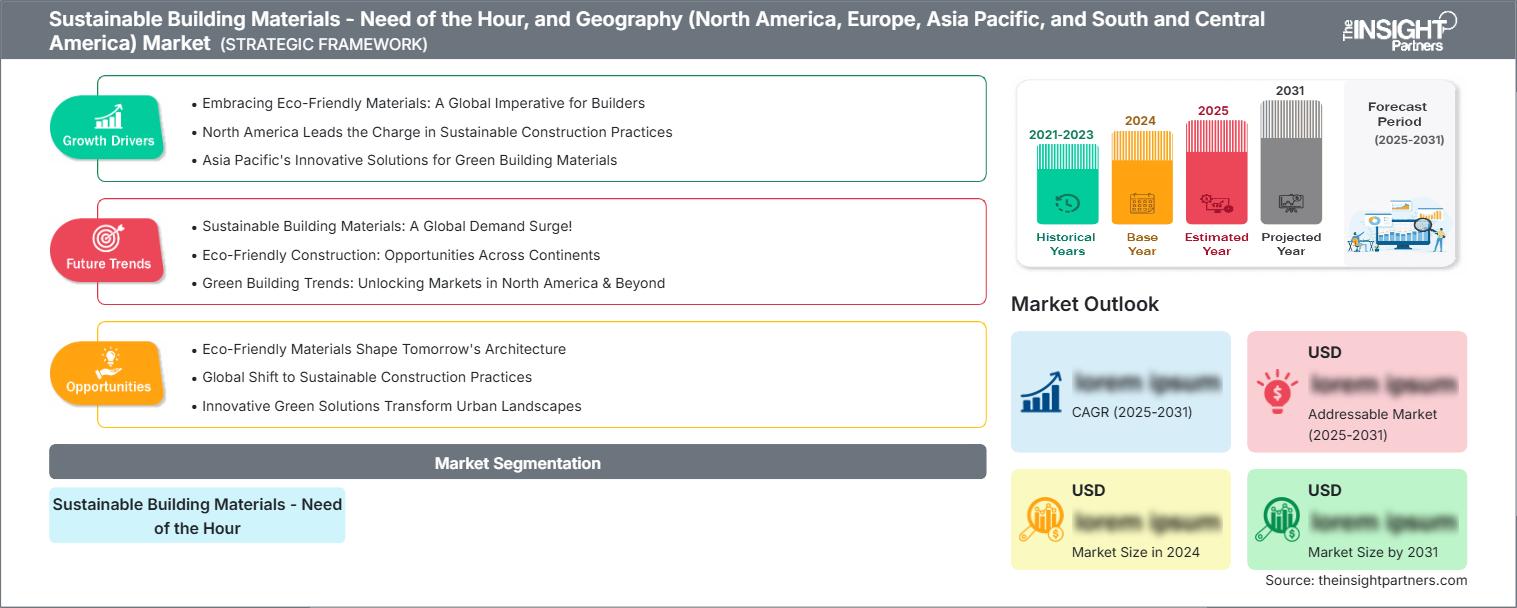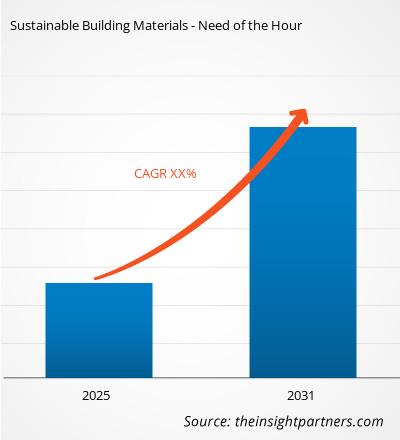Customize This Report To Suit Your Requirement
You will get customization on any report - free of charge - including parts of this report, or country-level analysis, Excel Data pack, as well as avail great offers and discounts for start-ups & universities
Sustainable Building Materials - Need of the Hour, and Geography (North America, Europe, Asia Pacific, and South and Central America)Market: Strategic Insights

-
Get Top Key Market Trends of this report.This FREE sample will include data analysis, ranging from market trends to estimates and forecasts.
The major materials used as sustainable building materials include green thermal insulation, recycled metal, reclaimed wood, bamboo, insulated foam concrete, recycled glass, etc. These are ecofriendly materials and has low environmental impact during production, implementation and maintenance. Mostly they are recyclable and locally sourced materials. Companies are pursuing zero-carbon buildings and optimizing the performance of the building cycle by using these sustainable building materials. Continuously greener materials are introduced in the market, which significantly reduces the energy cost in residential and commercial construction.
Sustainable Building Materials - Need of the Hour, and Geography (North America, Europe, Asia Pacific, and South and Central America)Market Regional Insights
The regional trends and factors influencing the Sustainable Building Materials - Need of the Hour, and Geography (North America, Europe, Asia Pacific, and South and Central America)Market throughout the forecast period have been thoroughly explained by the analysts at The Insight Partners. This section also discusses Sustainable Building Materials - Need of the Hour, and Geography (North America, Europe, Asia Pacific, and South and Central America)Market segments and geography across North America, Europe, Asia Pacific, Middle East and Africa, and South and Central America.
Sustainable Building Materials - Need of the Hour, and Geography (North America, Europe, Asia Pacific, and South and Central America)Market Report Scope
| Report Attribute | Details |
|---|---|
| Market size in 2024 | US$ XX million |
| Market Size by 2031 | US$ XX Million |
| Global CAGR (2025 - 2031) | XX% |
| Historical Data | 2021-2023 |
| Forecast period | 2025-2031 |
| Segments Covered | By Sustainable Building Materials - Need of the Hour |
| Regions and Countries Covered |
North America
|
| Market leaders and key company profiles |
|
Sustainable Building Materials - Need of the Hour, and Geography (North America, Europe, Asia Pacific, and South and Central America)Market Players Density: Understanding Its Impact on Business Dynamics
The Sustainable Building Materials - Need of the Hour, and Geography (North America, Europe, Asia Pacific, and South and Central America)Market is growing rapidly, driven by increasing end-user demand due to factors such as evolving consumer preferences, technological advancements, and greater awareness of the product's benefits. As demand rises, businesses are expanding their offerings, innovating to meet consumer needs, and capitalizing on emerging trends, which further fuels market growth.

- Get the Sustainable Building Materials - Need of the Hour, and Geography (North America, Europe, Asia Pacific, and South and Central America)Market top key players overview
Impact of construction lasts for decades and affects current as well as future generation; hence, it is the need of the hour to adopt sustainable building materials that have a positive impact on the environment during the construction and after the life cycle of the building.
- Historical Analysis (2 Years), Base Year, Forecast (7 Years) with CAGR
- PEST and SWOT Analysis
- Market Size Value / Volume - Global, Regional, Country
- Industry and Competitive Landscape
- Excel Dataset
Recent Reports
Testimonials
Reason to Buy
- Informed Decision-Making
- Understanding Market Dynamics
- Competitive Analysis
- Identifying Emerging Markets
- Customer Insights
- Market Forecasts
- Risk Mitigation
- Boosting Operational Efficiency
- Strategic Planning
- Investment Justification
- Tracking Industry Innovations
- Aligning with Regulatory Trends





















 Get Free Sample For
Get Free Sample For